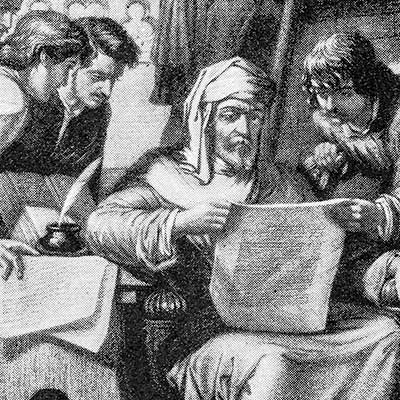
Digital Humanities
The University of Newcastle has a long history of world-leading Digital Humanities projects.
John F Burrows as Professor of English at Newcastle in the mid-1970s more or less invented computational stylistics and inspired numerous colleagues and students to pursue digital humanities projects or even careers. Two centres established by the University promoted DH at Newcastle: the Centre for Literary and Linguistic Computing (1989-2024) and the Centre for 21st Century Humanities (2018-22). The Early Modern Women Research Network (2018- ; now based at ANU) completed some major projects in presenting literary and historical resources online as an adjunct to its wider research programme.
The foundational work in Digital Humanities at Newcastle has been particularly important in underpinning collaborations with other universities in Australia and internationally. Eight Australian universities have been partners in UON-led national infrastructure grants. Numerous international workshops and conferences have been hosted at UON, most recently the Mapping Culture and History workshop (2022). Prof Ray Siemens was appointed to a UON Global Innovation Chair in DH in 2019 and has fostered numerous partnerships and connections, including the ongoing Canadian Australian Partnership in Open Scholarship, which has met twice in Newcastle. Active collaborations with international universities have included those with King’s College London, the Jagellonian, Leeds and New York Universities, and the Universities of British Columbia, Massachusetts (Amherst), Victoria (BC) and Würzburg. UON Honorary Professor Erin McCarthy currently leads a European Research Council Consolidator grant with a DH programme and is based at the University of Galway.
DH at Newcastle was fortunate to attract a dedicated and inventive group of developers, including senior undergraduates and RHD candidates in Computer Science and Software Engineering. Dr Bill Pascoe was the lead developer for the Centre for 21st Century Humanities and for the Colonial Frontier Massacre Map and is the System Architect for TLCMap. He led and trained the junior developer group. The data model and visualisation architecture for the CFMM is his, as is the concept and structural design of TLCMap.
Colonial Frontier Massacres Map
The foundation of this important intervention in the history of Australia post-contact is the research of its leader, the late Prof Lyndall Ryan, but its online presentation as an interactive, richly documented resource has amplified its impact immeasurably.
The fifth and final stage of the Map was completed in late 2024. It appears on a UON website and as a layer on TLCMap. The full database is available for download from the Australian Data Archive.
TLCMap
This platform, launched in 2019, collects information about Australian history and culture linked to place. The founding aim of TLCMap was to make the digital affordances of the Colonial Frontier Massacre Map available to all researchers for their own projects. It has searchable national gazetteers and numerous user-contributed map layers. Its assembly of tools and guides aims to make it as simple as possible for researchers to create their own map layers and combine them with existing layers. UON has been the host institution for TLCMap from the beginning. Platform development has also been supported by a number of grants and co-investments from the ARC and the ARDC and by contributions by a group of partner Australian universities.
CLLC
The Centre for Literary and Linguistic Computing (CLLC) was founded in 1989. Ground breaking stylometrist, the late John Burrows, was at the University of Newcastle from 1976 to 1989 when he retired but carried on significant work, collaborating with Dr Alexis Antonia, developing techniques that are now standard methods used world-wide. Emeritus Prof. Hugh Craig joined in 1989 and became director in 2001. Harold Tarrant and Wayne McKenna were other figures who went on to build DH cultures elsewhere.
CLLC methods are modelled and enabled by the Intelligent Archive workbench. The IA is a Java application which can be downloaded for use on a PC or Mac.
Early Modern Women Research Network (EMWRN)
The Early Modern Women Research Network (EMWRN) is an Australian-based network of scholars which aims to bring the often institutionally-isolated scholars of early modern women's writing into dialogue with others in the field, both within Australia and internationally.
EMWRN represents and investigates the various material contexts which women’s writing was circulated during the early modern era in England, through manuscript, print and oral culture, exploring the production, transmission and circulation of texts from the originary moment of their production to later redactions. Now hosted by the ANU, it was created and hosted by the University of Newcastle and one of the major outcomes during that time was the Material Cultures of Early Modern Women’s Writing Digital Archive which presents online editions of women’s writing that circulated in a variety of forms in the sixteenth and seventeenth centuries.
The University of Newcastle acknowledges the traditional custodians of the lands within our footprint areas: Awabakal, Darkinjung, Biripai, Worimi, Wonnarua, and Eora Nations. We also pay respect to the wisdom of our Elders past and present.

